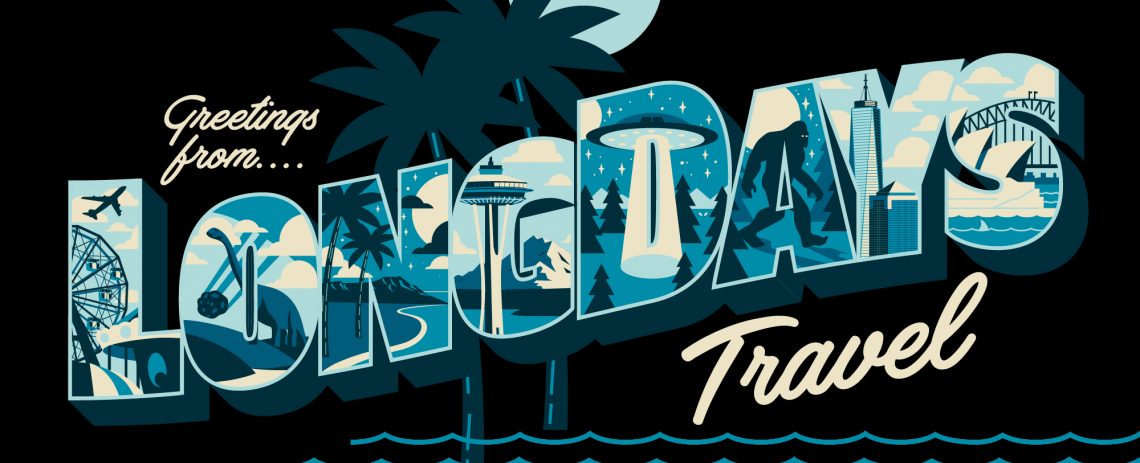The “Mystery Castle” is located in the south part of Phoenix, just along the foothills. I took the bus and then walked a short 15 mins through a residential neighborhood where it turns off into park trails and the dirt road entrance to the Castle.



It was built by a cobbler from Seattle named Boyce Gulley. He had been diagnosed with Tuberculosis and given a six month life expectancy. He decided to keep this a secret from his wife and daughter and disappeared without telling anyone so as not to be a burden. He relocated to Phoenix for the hot and dry climate, and chose a spot about nine miles south of the city that at the time was next to the city dump to build his castle.

He began building the Mystery Castle for his daughter in the 1930s using materials he salvaged from the dump. He also frequently visited Mexico and used decorative pieces he picked up in his travels. Some of the more unusual materials used were colored glass baking pans, a telephone wire pole, mortar from goats milk and car parts.

Gulley had spend a couple of years in school for architecture, but it was not his trade. He made a living in Phoenix as a shoe salesman.
He labored alone and worked on he construction of the house until he passed away in 1945. He had recovered from Tuberculosis but ultimately passed away from cancer. A lawyer notified his wife and daughter in Seattle of his passing and the property they had inherited.

His wife Fran and daughter Mary Lou moved in right away. Mary Lou was 22 years old at the time. The Castle had no electricity and no running water. Boyce had furnished it with antique furniture. It was built with 13 fireplaces, including a large outdoor one where they would grill steaks. They would shower at the local gas station and haul 5 gallon bottles of water from a neighbor’s ranch.

The story of the privie was taken from the book Mary Lou wrote in 1952 called, My Mystery Castle. “A well worn path led to the gaunt little black closet which hid in shamefaced necessity behind two mesquite trees. The door was shrunk by the heat, and above it, carved in uncertain scrolls, was “The Pink Privy.” The inside was blushed with the most startling pink paint I had ever seen. There were two small seats with no bottoms. They were black cavernous holes, and no telling where the end was — maybe in Red Occupied China. Each time I found it necessary to patronize “Pinky,” I almost hated human nature”.

The Castle has 18 rooms and one included a trap door. Fran and Mary Lou were given specific instructions not to open the door until they had lived there for 3 years. They abided Boyce’s request and opened the trap door in January of 1948 with Life Magazine present. Inside the 9ft dug shaft, Mary Lou found a box from her father with a photograph of taken of him a few months before his passing, gold, two $500 dollar bills, necklaces, a Valentine’s Day Card from Mary Lou he had saved and letters explaining he had built the Castle out of love for his princess Mary Lou and how he was inspired by the sand castles they used to build together on the beach.



There is a chapel and a bar and the room in between was called “purgatory”. There is a wishing well where you can wish for a drink from the bar which would be given to you from a dumbwaiter.

Fran and Mary Lou started offering tours in 1948. Mary Lou lived the house until she passed away in November 2011. She had made her living by offering tours. Electricity was added to parts of the Castle in 1992. The house is now cared for by the Mystery House Foundation and care takers still live on the property. Many of the rooms are not open to the public. All of Mary Lou’s belongings are in the property left undisturbed. The tour guides ask that to please do not touch so it can me kept like a museum. She was quite an eccentric person. A collection of pet rocks, a room full of jeans and jean pillows, a doll from “The House of Joy”.



I imagine the good spirits of the Gulley family are happily floating around on the property, together and as a family. The entrance to Mary Lou’s room is closed off with a rope. The tours are very casual and last about 45 minutes. I walked up and joined a group that was about to start. The tour is $10 for adults and the guides only accept cash. The property is made mainly out of rocks and stones including steep stairs and uneven surfaces. It is not handicap accessible. There is an outhouse on site.


There are so many details on the property and parts of the story I’m sure I missed. I included photos and information from the Life Magazine article that was published in January 1948.
Hope you enjoyed! Cheers to another long days adventure.
